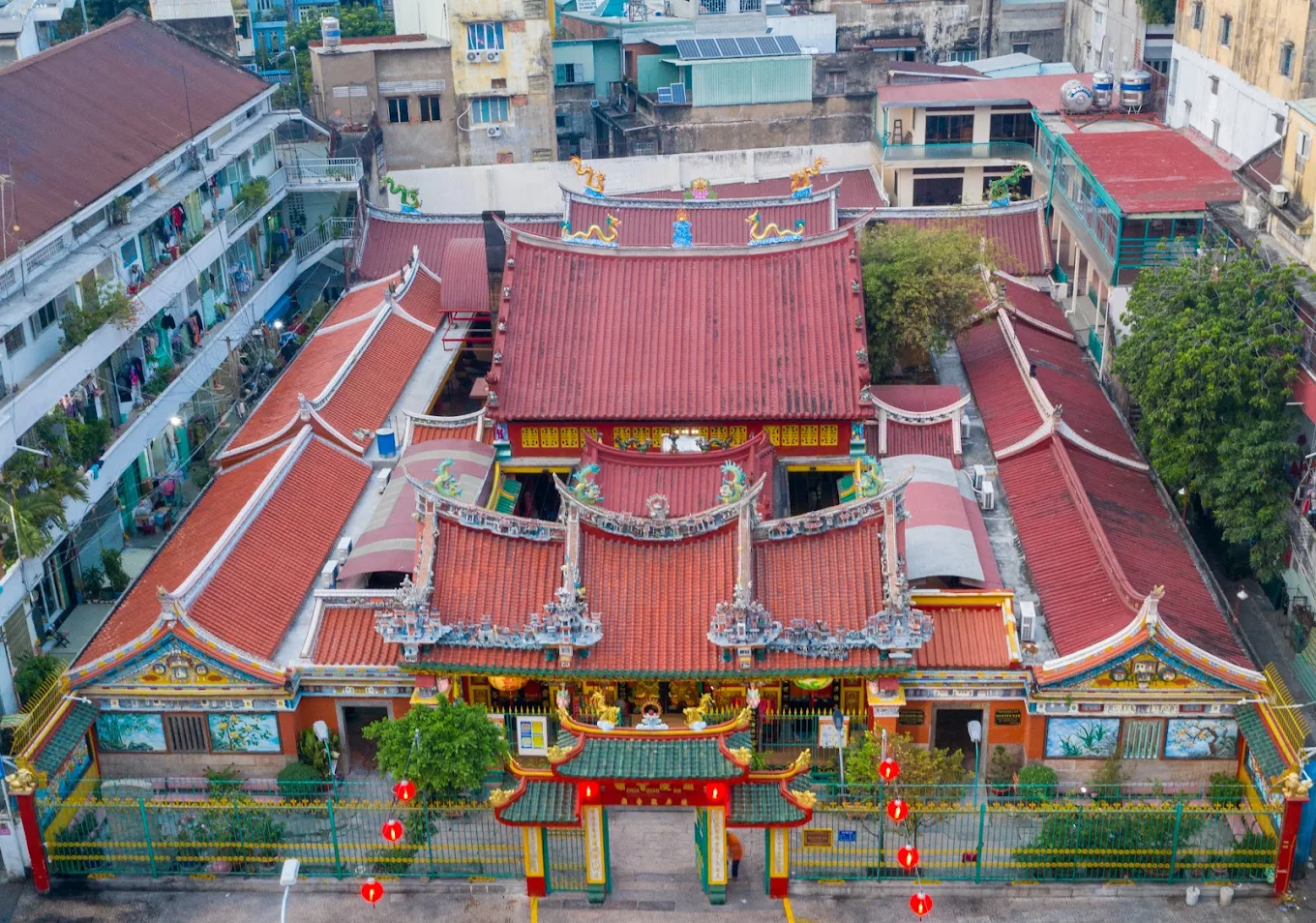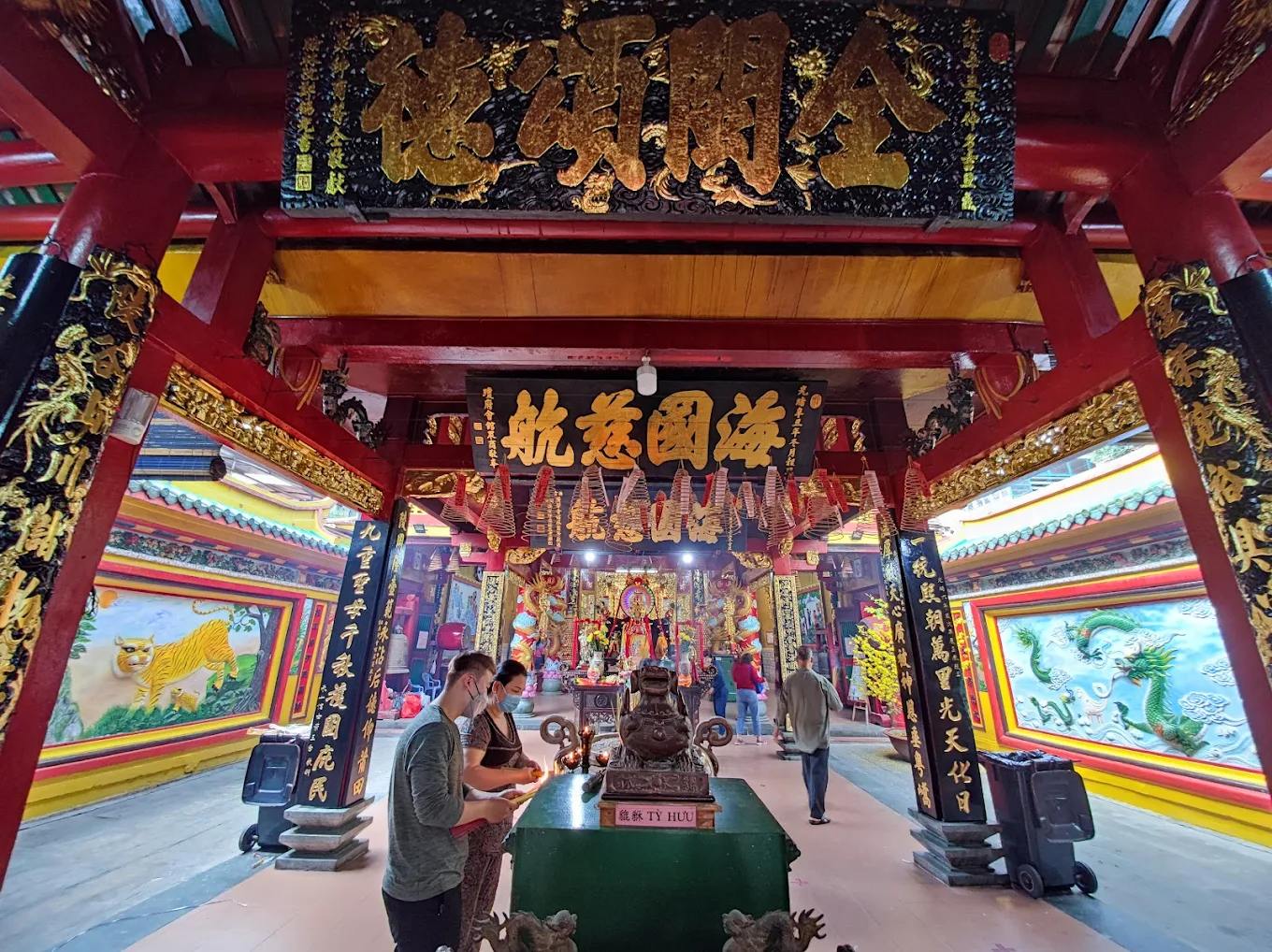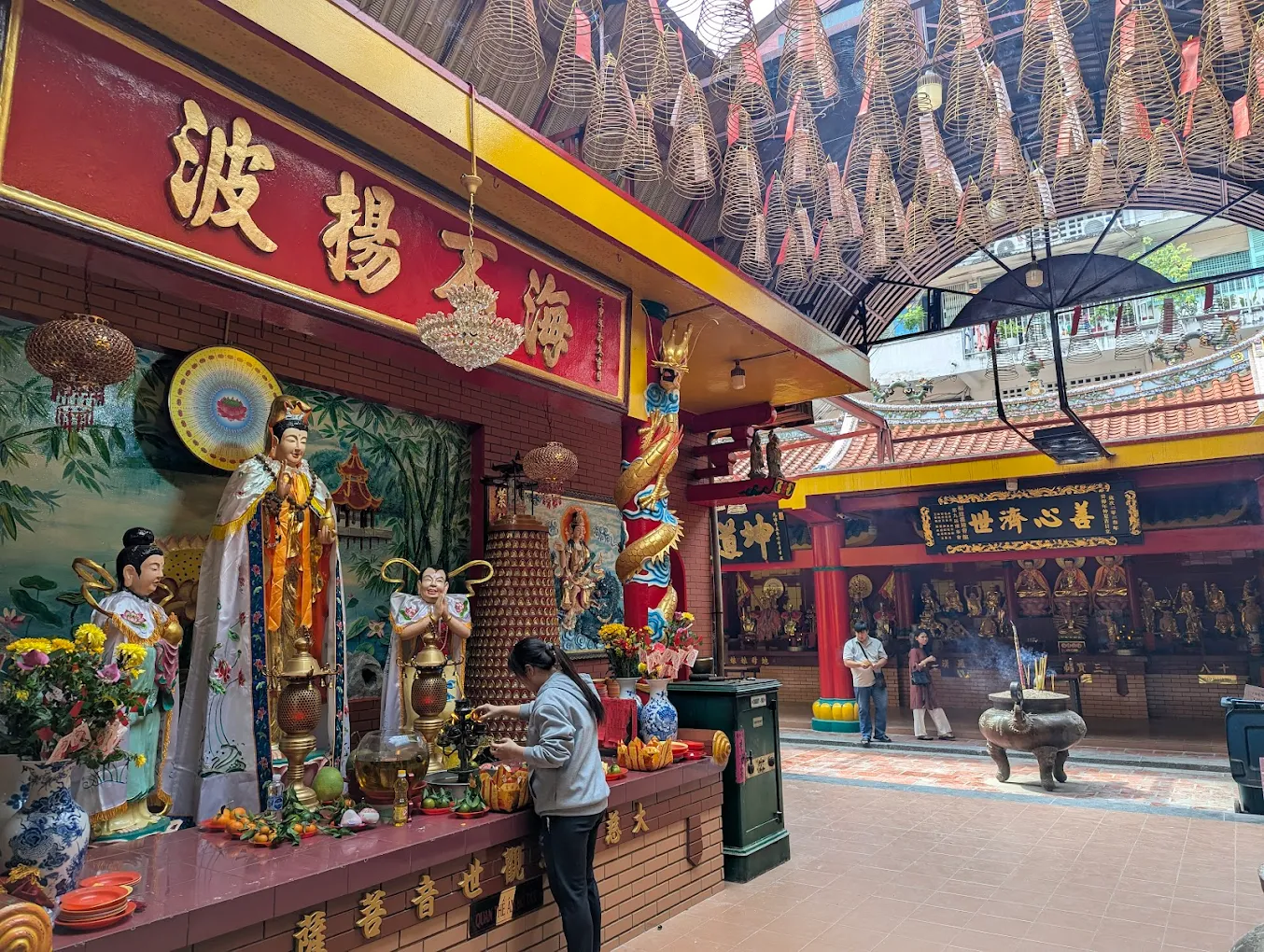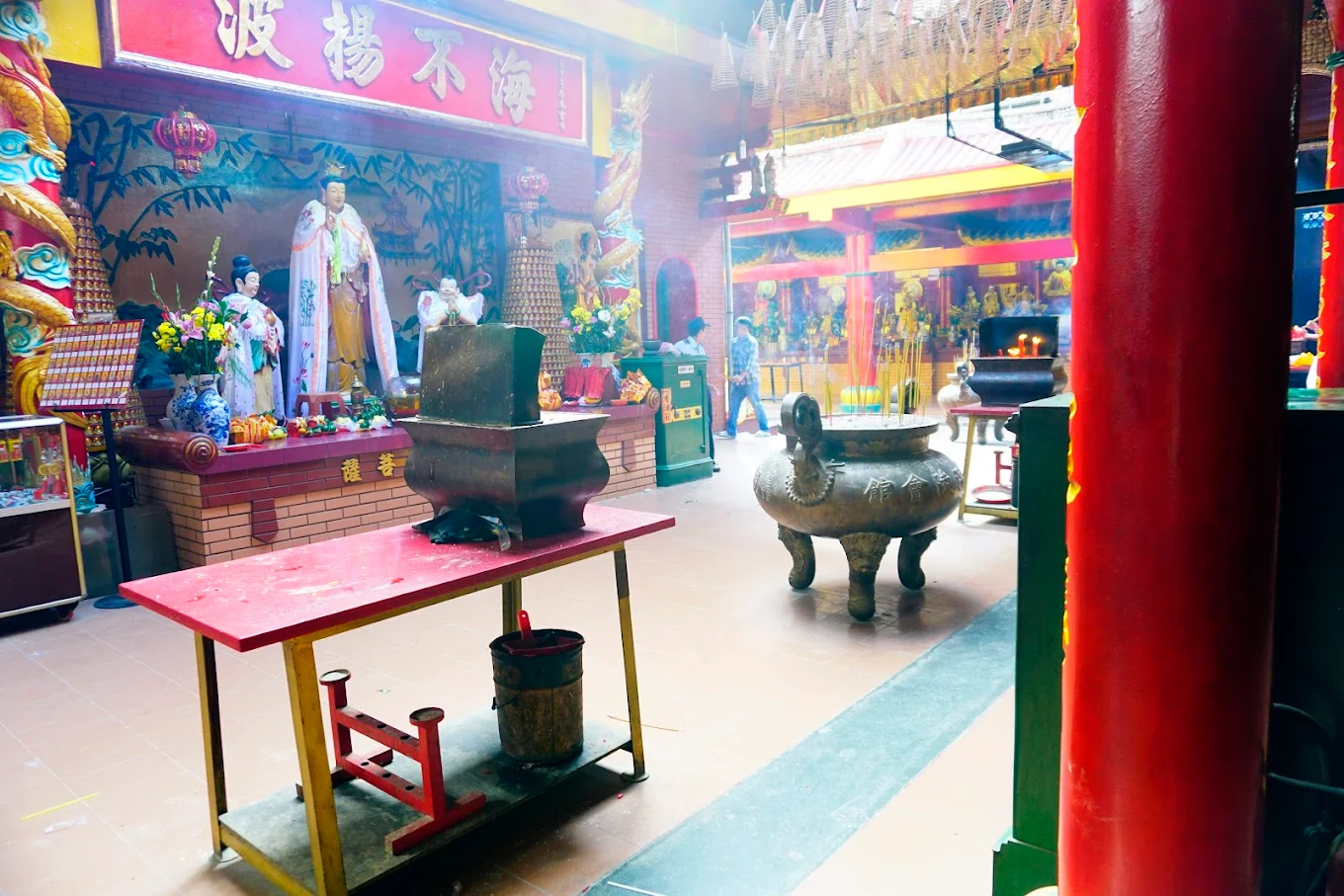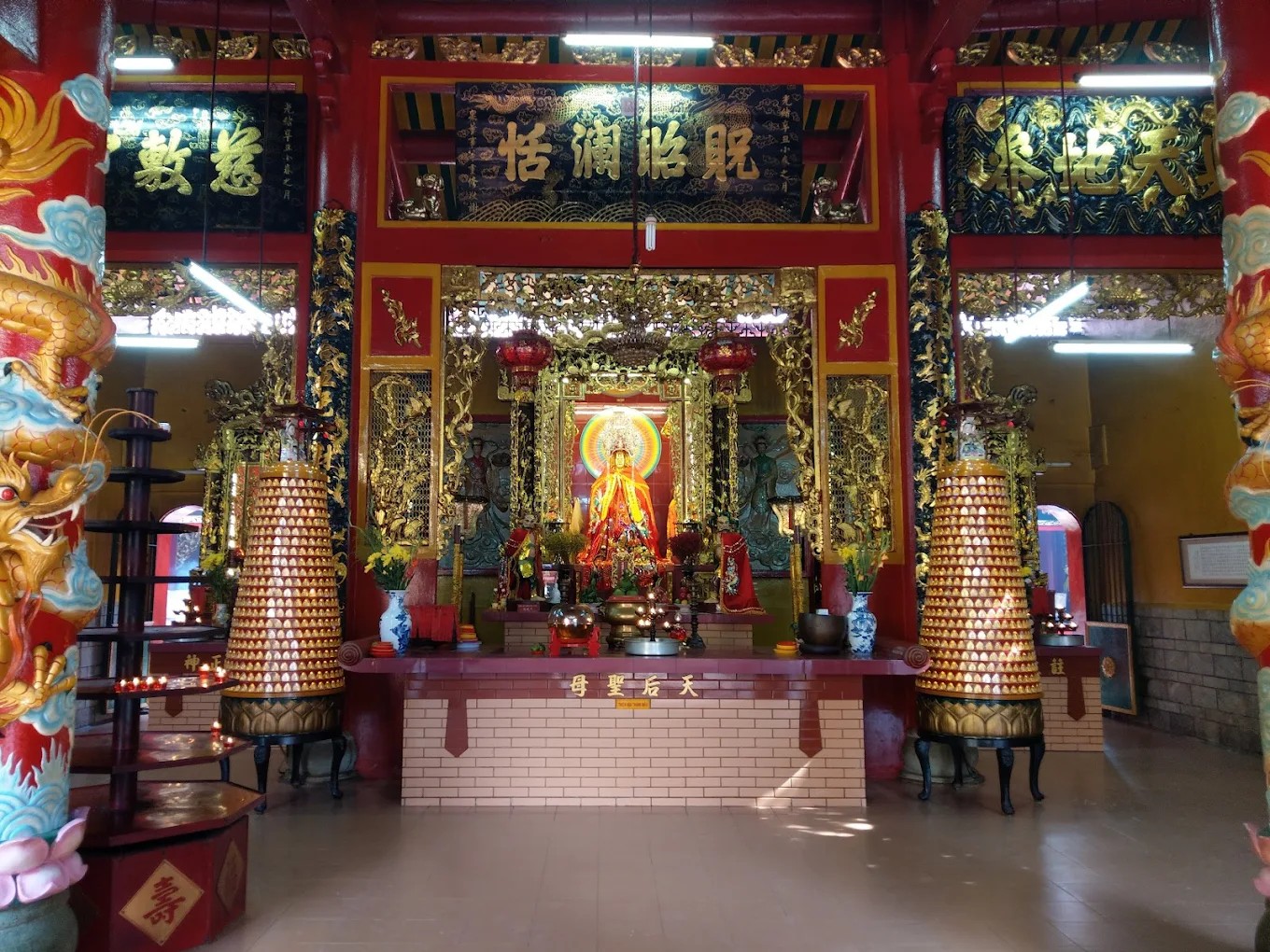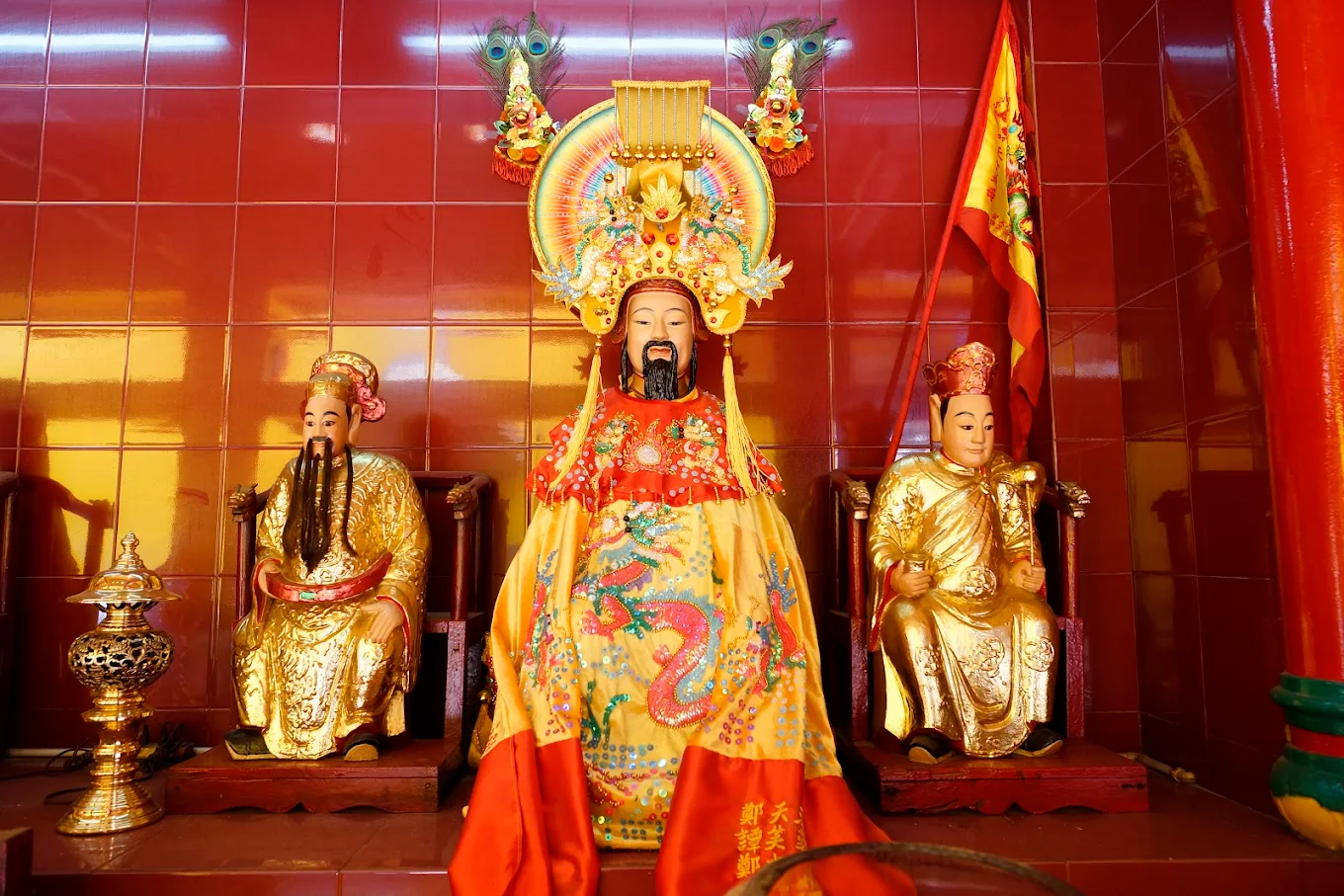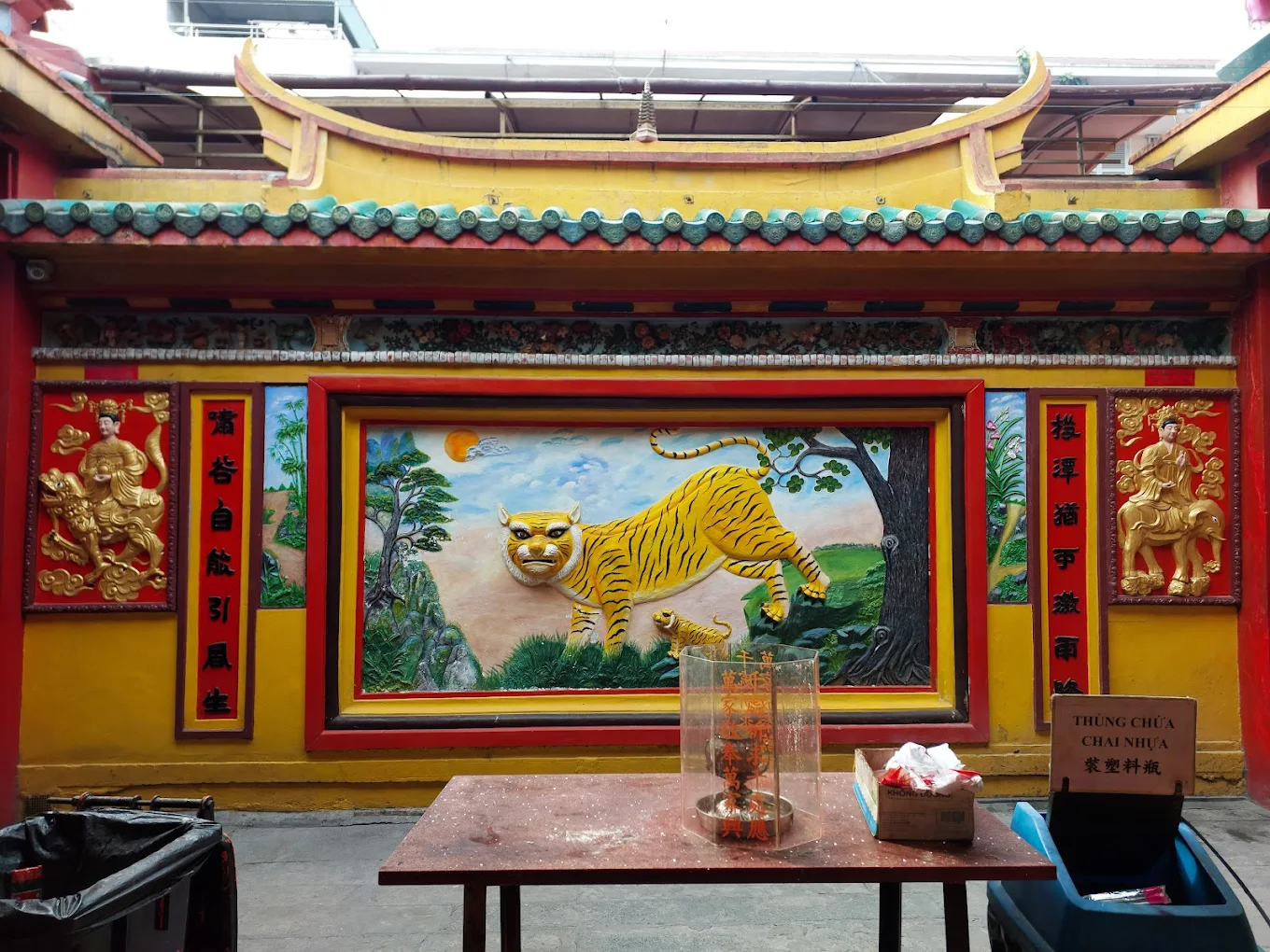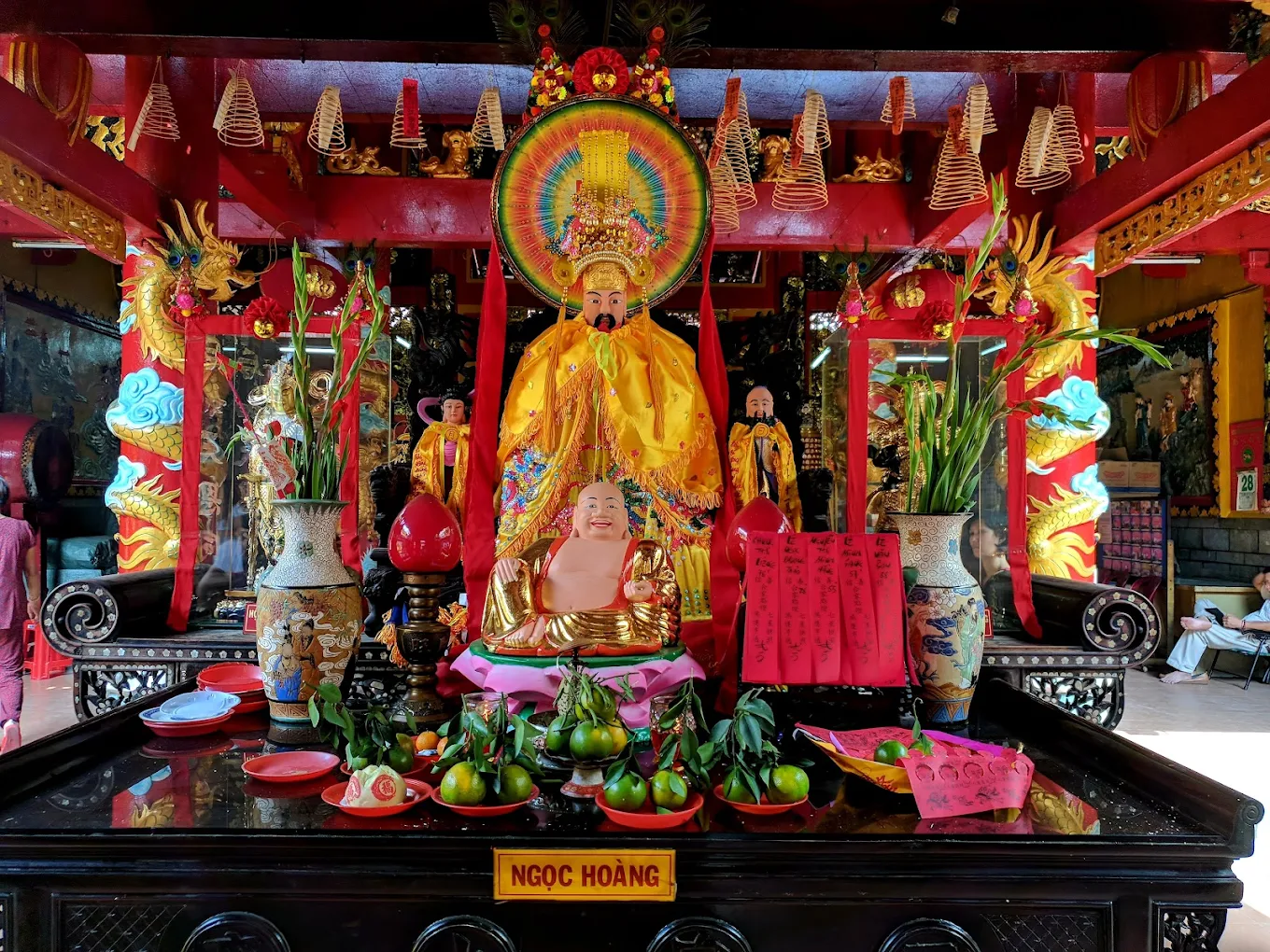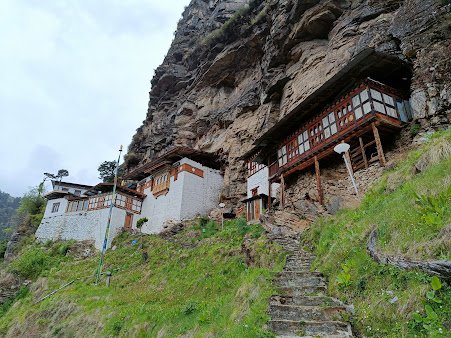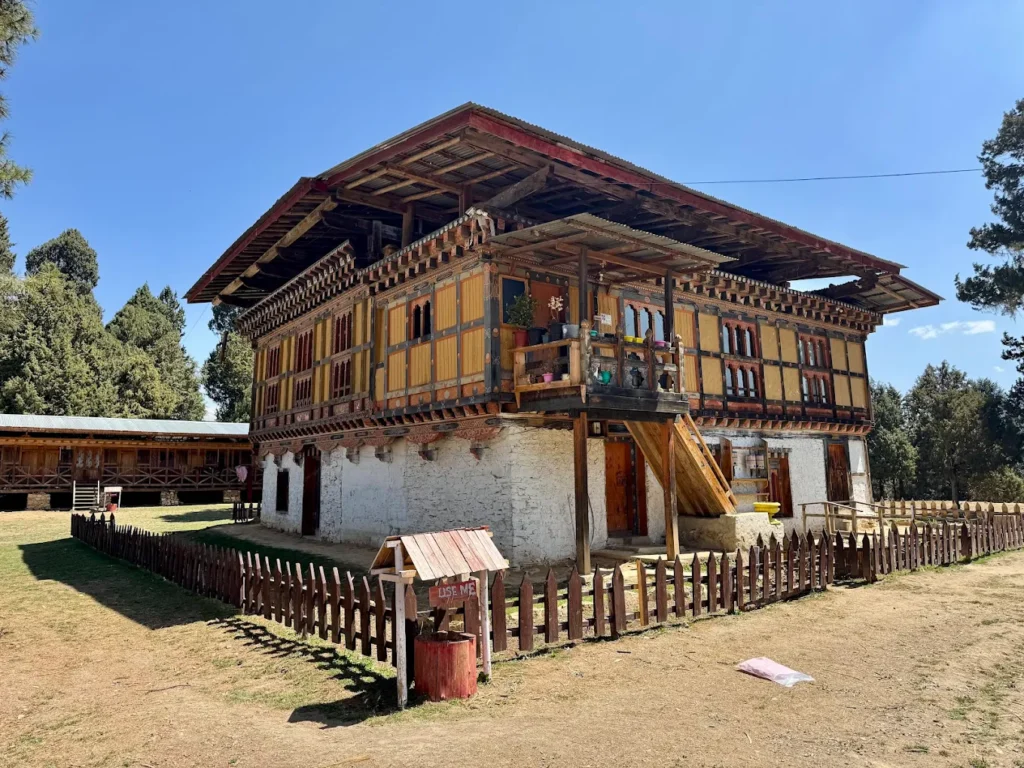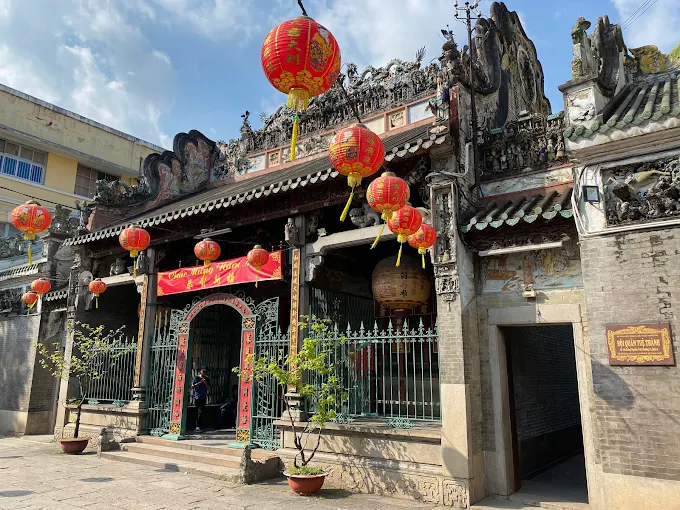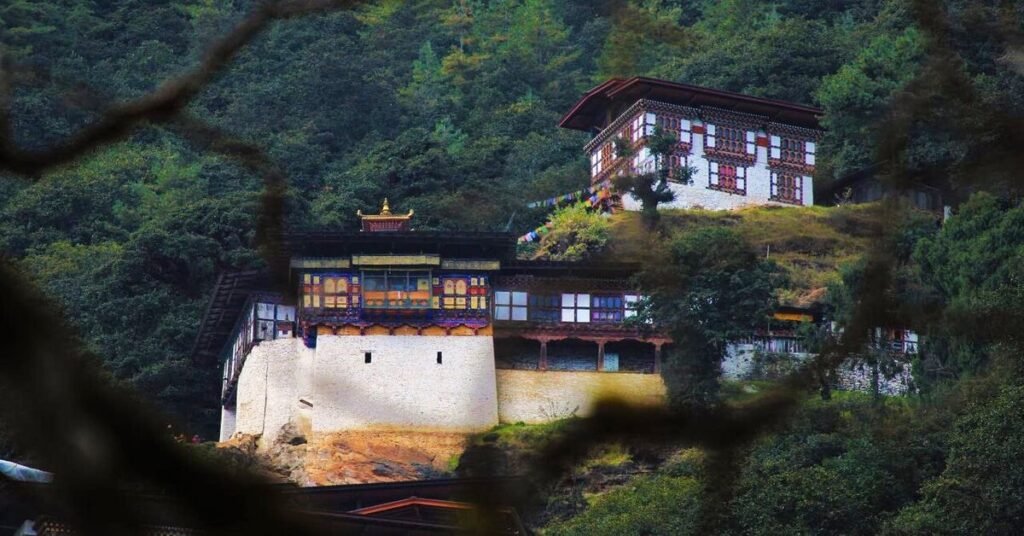Ôn Lăng Pagoda: The Cantonese Retreat of Celestial Serenity
In the vibrant pulse of Chợ Lớn, the scent of sandalwood incense drifts from Ôn Lăng Pagoda, its green-tiled roofs glowing under Ho Chi Minh City’s golden sun. This 18th-century Cantonese temple, crowned by a grand dragon relief curling across its gate, radiates tranquility amid District 5’s bustling markets. Founded by immigrants from Ôn Châu, Guangdong, its courtyards hum with soft chants and the resonant chime of a bronze bell, weaving Taoist devotion with Buddhist compassion. Vibrant murals of celestial voyages and delicate lotus carvings whisper tales of divine protection, from the Goddess of the Sea to the Goddess of Mercy. Ôn Lăng Pagoda stands as a serene sanctuary, inviting exploration of its sacred artistry and Cantonese heritage.
Overview and Significance of Ôn Lăng Pagoda
Ôn Lăng Pagoda anchors District 5’s Cantonese community, blending Taoist reverence with Chợ Lớn’s multicultural spirit. Established in 1740 by Ôn Châu immigrants, it serves as a temple and guildhall, honoring maritime and compassionate ideals. The Goddess of the Sea, revered for protecting seafarers, anchors its spiritual core, while the Goddess of Mercy and Guan Yu enrich its syncretic worship. Its Cantonese architecture, with green-tiled roofs and dragon reliefs, hosts serene festivals that unite locals in devotion. This exploration unveils Ôn Lăng Pagoda’s history, cultural depth, and enduring legacy in Ho Chi Minh City.
Introduction to Ôn Lăng Pagoda
Nestled in District 5, Ôn Lăng Pagoda embodies the enduring heritage of Cantonese immigrants. Known as Hội Quán Ôn Lăng, it reflects the seafaring soul of Ôn Châu, Guangdong. Thiên Hậu [Goddess of the Sea], revered as the protector of mariners, draws devotees with offerings of incense and dried fish, her presence a beacon of hope against turbulent waves. Her maritime grace, rooted in Cantonese Taoist belief, guides sailors to safety. Alongside her, the Goddess of Mercy and Guan Yu weave a syncretic tapestry, blending Taoist and Buddhist devotion in Chợ Lớn’s vibrant heart, where the pagoda’s quiet courtyards offer solace amid urban clamor.
Historical Journey
Ôn Lăng Pagoda emerged in 1740, founded by Cantonese immigrants seeking a communal sanctuary in Chợ Lớn. Its early years saw it flourish as a guildhall, uniting Ôn Châu merchants and seafarers. Renovations in 1820 and 1880, marked by stone steles, preserved its structure through colonial upheavals, while a 1925 restoration added the iconic dragon relief. These efforts ensured its resilience against time and urban growth. Key milestones include:
- 1740: Founded as Hội Quán Ôn Lăng by Ôn Châu settlers.
- 1820: Restored with new roof tiles and expanded altars.
- 1880: Strengthened foundations and added lotus carvings.
- 1925: Installed the grand dragon relief above the gate.
Cultural Significance
Ôn Lăng Pagoda weaves a rich thread in Chợ Lớn’s cultural tapestry, uniting Cantonese and Vietnamese communities in shared reverence. Its annual festivals, such as the Goddess of the Sea’s birthday on the 23rd day of the third lunar month, fill the courtyards with lion dances, paper lanterns swaying in the evening breeze, and communal feasts that strengthen bonds. The Hungry Ghost Festival [Cúng Cô Hồn], held on the 15th day of the seventh lunar month, sees devotees offering rice and fruits to wandering spirits, embodying Taoist compassion. Beyond worship, the pagoda supports literacy programs and charity drives, amplifying Ôn Lăng Pagoda’s cultural resonance as a beacon of community unity in District 5.
Unique Legacy
The pagoda’s legacy lies in its serene Cantonese artistry and syncretic worship. The dragon relief, a masterpiece of woodwork depicting celestial guardians, symbolizes divine protection, setting Ôn Lăng apart from the martial focus of Nghĩa An or the maritime boat relief of Quảng Triệu. Its green-tiled roofs and tranquil courtyards, quieter than the bustling Bà Thiên Hậu Pagoda, offer a meditative retreat, drawing those seeking peace in Chợ Lớn’s lively streets. This unique blend of artistry and serenity defines Ôn Lăng Pagoda’s enduring presence in Ho Chi Minh City.
Community and Global Impact
Ôn Lăng Pagoda serves as a vital link for Cantonese communities across Vietnam, Malaysia, and Singapore, hosting cultural exchanges that celebrate Ôn Châu traditions. Locally, it organizes festivals and charity events, distributing food and clothing to District 5’s needy, fostering a sense of kinship. Globally, pilgrims from Guangdong travel to honor the Goddess of the Sea, their journeys weaving Ôn Lăng Pagoda into the broader Cantonese diaspora. Its quiet courtyards, filled with the soft murmur of prayers, resonate far beyond Chợ Lớn, amplifying Ôn Lăng Pagoda’s influence.
Historical Anecdotes
Cantonese elders share a tale of a fisherman, lost in a storm, who prayed to the Goddess of the Sea and found safe harbor, his gratitude immortalized in a 19th-century incense offering. Another story recounts a master carver from Ôn Châu, who, in 1925, crafted the dragon relief, infusing each scale with prayers for community prosperity. These narratives, passed down through generations, deepen the pagoda’s spiritual tapestry, tying personal devotion to collective memory in Chợ Lớn’s storied past.
Social Role
Ôn Lăng Pagoda thrives as a community hub, hosting workshops on Cantonese calligraphy and Taoist philosophy that draw local youth and elders alike. During the Hungry Ghost Festival, it transforms into a center of generosity, offering meals to the underprivileged, reflecting the Taoist principle of compassion. Its open courtyards, shaded by ancient banyan trees, welcome all, from curious travelers to devoted locals, fostering inclusivity in District 5’s vibrant neighborhood, distinct from the more monastic-focused Buddhist temples nearby.
Artistic Influence
The pagoda’s dragon relief and lotus murals inspire Chợ Lớn’s artisans, their designs echoed in local paintings and ceramics sold in nearby markets. Its Cantonese aesthetic, with green tiles and gilded woodwork, shapes District 5’s visual culture, standing apart from the stone-heavy designs of Vietnamese pagodas or the maritime motifs of Hainanese temples. Ôn Lăng Pagoda’s artistry, blending intricate carvings with serene elegance, enriches Ho Chi Minh City’s creative landscape, inviting admiration from visitors and artists alike.
Ôn Lăng Pagoda’s history, steeped in Cantonese devotion, shapes its architectural splendor. The dragon relief curling above its gate and the tranquil courtyards, alive with the scent of incense, set the stage for exploring Ôn Lăng Pagoda’s design and spiritual essence, where artistry and reverence converge.
Architectural and Spiritual Features
Ôn Lăng Pagoda’s architecture, a masterpiece of Cantonese design, radiates in District 5 with green-tiled roofs and a majestic dragon relief. Spanning 700 square meters, its layout—courtyard, front hall, main shrine—guides worshippers through a journey of reverence. The Goddess of the Sea’s altar, aglow with golden light, anchors its spiritual core, joined by the Goddess of Mercy and Guan Yu. Intricate lotus carvings and vibrant murals of celestial voyages, distinct from the red horse statue of Nghĩa An or the boat relief of Quảng Triệu, weave tales of divine protection. This exploration unveils Ôn Lăng Pagoda’s artistry and sacred features.
Iconic Design
Ôn Lăng Pagoda embodies Cantonese elegance, its three-door gate [tam quan] opening to a 150-square-meter courtyard framed by stone unicorns. The green-tiled roofs, their edges curling like gentle waves, contrast with red pillars symbolizing prosperity, creating a serene silhouette against Chợ Lớn’s skyline. Unlike the angular Quốc-shaped layouts of Vietnamese pagodas, its flowing design fosters a meditative ascent toward the main shrine, inviting quiet contemplation.
Key Structures
The pagoda’s layout includes:
- Courtyard: A tranquil expanse with stone unicorns and lotus-shaped incense burners, bathed in dappled sunlight from ancient banyan trees.
- Front Hall [tiền điện]: Houses the Jade Emperor’s altar, adorned with gilded calligraphy boards that shimmer in candlelight.
- Side Halls: Dedicated to the Goddess of Mercy and Dharma Protectors, their walls etched with lotus motifs, framing the courtyard’s serenity.
- Main Shrine [chánh điện]: Elevated, centered on the Goddess of the Sea, its golden altar radiates warmth, drawing worshippers into quiet reverence.
Worshipped Statues/Deities
Key deities include:
- Thiên Hậu [Goddess of the Sea]: A 1.5-meter wooden statue, crowned with pearls and draped in embroidered robes, protects seafarers. Her altar, adorned with maritime motifs like waves and fish, draws offerings of dried seafood, embodying Cantonese coastal devotion rooted in Taoist belief. Devotees pray for safe voyages, their whispers mingling with incense smoke.
- Quan Âm [Goddess of Mercy]: A 1.3-meter white jade statue, representing Avalokiteshvara, embodies Buddhist compassion. Devotees seek her blessings for peace, complementing the pagoda’s Taoist core. Her serene presence, rooted in Mahayana teachings, fosters solace and reflection in the side hall.
- Quan Công [Guan Yu]: A 1.2-meter wooden statue, with a black beard and red cape, honors Guan Yu, a Three Kingdoms warrior deified for loyalty. His altar, adorned with ceremonial swords, blends Taoist and Buddhist reverence, drawing prayers for strength.
Materials and Techniques
Cantonese artisans crafted the pagoda’s beams from jackfruit wood [gỗ mít], prized for its durability and warm grain, polished to a soft sheen. Green-glazed roof tiles, imported from Ôn Châu, shimmer under rain, their hue evoking jade and harmony. The dragon relief, carved from teak in 1925, showcases intricate techniques, with each scale hand-chiseled to capture celestial power, distinct from the stone-heavy designs of Buddhist pagodas.
Signature Elements
The dragon relief above the entrance, a sprawling masterpiece carved in 1925, depicts celestial guardians soaring through clouds, symbolizing divine protection over Chợ Lớn’s community. A bronze bell, cast in 1740, etched with lotus and wave motifs, chimes softly in the main hall, its resonant tones a hallmark of Ôn Lăng Pagoda’s serene ambiance, unmatched in District 5.
Lesser-Known Features
Subtle details include:
- Lotus Murals: Wall paintings of blooming lotuses, symbolizing purity and enlightenment, their delicate petals glowing in soft candlelight, rooted in Cantonese artistry.
- Calligraphic Boards: Inscriptions from 1740, penned by Ôn Châu scholars, exuding Taoist wisdom with flowing strokes.
- Incense Coils: Suspended from the ceiling, their slow-burning spirals create a sacred haze, enveloping worshippers in tranquility.
Preservation Efforts
Restorations in 1820, 1880, and 1925 reinforced the pagoda’s roof and dragon relief, using traditional Cantonese techniques to maintain authenticity. Recent community-funded efforts, including tile waterproofing and wood polishing, preserve Ôn Lăng Pagoda’s structural elegance, ensuring its green roofs gleam for generations amid Chợ Lớn’s urban sprawl.
Environmental Integration
The courtyard’s feng shui [phong thủy], a Cantonese design aligning with cosmic energy, channels breezes through its stone pathways, cooling the halls. Potted orchids and banyan trees shade the space, fostering a meditative calm that contrasts with District 5’s bustling markets, grounding Ôn Lăng Pagoda as a serene retreat in Chợ Lớn’s urban heart.
Artisan Narratives
In 1925, a Cantonese master carver from Ôn Châu sculpted the dragon relief, his chisels breathing life into each scale with prayers for community prosperity. His descendants, still active in Chợ Lớn’s artisan circles, maintain the pagoda’s woodwork, their stories weaving a legacy of craftsmanship and devotion that enriches Ôn Lăng Pagoda’s cultural tapestry.
Symbolic Details
The green tiles symbolize harmony, red pillars prosperity, their vibrant hues reflecting Cantonese aspirations for balance and abundance. The dragon relief, with its soaring guardians, embodies divine protection, distinct from the martial red horse of Nghĩa An or the boat relief of Quảng Triệu, anchoring Ôn Lăng Pagoda’s unique spiritual identity in District 5.
Landscape Integration
Stone pathways wind through the courtyard, their curves guiding visitors toward meditation under the banyan’s sprawling canopy. Surrounded by Chợ Lớn’s lively markets, Ôn Lăng Pagoda’s tranquil oasis contrasts with the urban energy, its green roofs and dragon relief offering a serene escape that amplifies its spiritual allure.
Ôn Lăng Pagoda’s architecture, from the soaring dragon relief to its serene altars, cradles a spiritual essence brought to life through its rituals. These practices, centered on the Goddess of the Sea and syncretic deities, weave devotion and artistry, inviting exploration of Ôn Lăng Pagoda’s sacred ceremonies.
Rituals and Practices
Ôn Lăng Pagoda’s rituals pulse with Cantonese Taoist traditions, centered on the Goddess of the Sea’s protective blessings. Daily incense offerings fill the air with a warm, woody fragrance, while festivals like the Goddess of the Sea’s birthday transform the courtyards with vibrant lion dances. These practices, steeped in devotion, cement the pagoda’s role as Chợ Lớn’s spiritual heart, offering solace amid District 5’s urban rhythm. From maritime prayers to communal celebrations, this exploration unveils Ôn Lăng Pagoda’s sacred customs, each rite a thread in its rich cultural tapestry.
Daily Sacred Rites
Each dawn, devotees light incense at the Goddess of the Sea’s altar, their prayers for safe voyages rising with the curling smoke. Monks chant Taoist scriptures, their voices harmonizing with the bronze bell’s resonant chime, a sound that lingers in the cool morning air. Evening offerings to the Goddess of Mercy, with flickering candles casting soft shadows, seek compassion, weaving a tranquil rhythm that grounds District 5’s bustling streets.
Unique Practices
Fishermen offer dried fish and blue ribbons to the Goddess of the Sea, a Cantonese custom seeking protection for maritime journeys, their hands trembling with hope as they tie knots around the altar. Devotees kneel before the Goddess of Mercy, whispering prayers for peace, a practice unique to Ôn Lăng Pagoda’s syncretic blend, distinct from the martial rites of Nghĩa An or the fertility focus of Tam Sơn.
Festival Traditions
Key festivals include:
- Goddess of the Sea’s Birthday: On the 23rd day of the third lunar month, lion dances weave through the courtyard, their drums echoing as devotees offer seafood to honor the maritime protector, the air alive with celebration.
- Hungry Ghost Festival [Cúng Cô Hồn]: On the 15th day of the seventh lunar month, offerings of rice and roasted pig [heo quay] appease wandering spirits, the pagoda glowing with lanterns under the moonlit sky.
- Lantern Festival [Tết Nguyên Tiêu]: On the 15th day of the first lunar month, paper lanterns sway in the breeze, illuminating prayers for prosperity and harmony.
Visitor Engagement
Visitors are welcomed to join daily prayers, lighting incense under the gentle guidance of monks, their hands brushing against lotus-shaped burners. During festivals, guests craft paper lanterns or offer fruits, immersing themselves in Cantonese traditions, the courtyard alive with shared devotion. These experiences, unique to Ôn Lăng Pagoda, deepen the connection to Chợ Lớn’s spiritual heritage, drawing travelers into its serene embrace.
Spiritual Community Roles
Monks lead rituals with measured grace, their chants filling the main hall, while lay practitioners [cư sĩ], often women from Cantonese families, tend the Goddess of the Sea’s altar with care, arranging offerings with reverence. These devotees, embodying Cantonese matriarchal traditions, organize festivals, weaving spirituality with community service, their efforts ensuring Ôn Lăng Pagoda remains a vibrant hub in District 5.
Interfaith Connections
Ôn Lăng Pagoda blends Taoist and Buddhist reverence, its Goddess of Mercy altar drawing Vietnamese worshippers who kneel alongside Cantonese devotees. This syncretism, quieter than the bustling Bà Thiên Hậu Pagoda, creates a harmonious spiritual space, broadening its appeal in Chợ Lớn’s diverse landscape, where Taoist chants mingle with Buddhist sutras in a shared pursuit of peace.
Ritual Symbolism
Blue ribbons tied to the Goddess of the Sea’s altar symbolize safe voyages, their delicate knots swaying in the breeze, while lotus flowers offered to the Goddess of Mercy embody purity and compassion. The dragon relief, soaring above the gate, enhances these rites with celestial power, its scales glinting as a reminder of divine protection rooted in Cantonese mythology, distinct from the martial symbols of other Chợ Lớn temples.
Seasonal Variations
Spring festivals pulse with maritime blessings, drawing fishermen to the Goddess of the Sea’s altar, their prayers carried by the scent of dried fish. Autumn rites shift to ancestral reverence during the Hungry Ghost Festival, with offerings of rice and fruits honoring the departed, adapting to the seasonal rhythms of Chợ Lớn’s spiritual life, a cycle that deepens Ôn Lăng Pagoda’s sacred role.
Monastic/Community Life
Monks meditate in the main hall, their robes rustling softly as they maintain altars with care, living lives of simplicity rooted in Taoist principles. Lay practitioners volunteer for charity, organizing food drives and cultural events, their efforts reinforcing Ôn Lăng Pagoda’s role as a community anchor, distinct from the monastic focus of Buddhist pagodas, offering a space where devotion and service intertwine.
Ôn Lăng Pagoda’s rituals, from the soft glow of incense to the vibrant pulse of festivals, invite visitors to immerse themselves in its spiritual heart. The dragon relief and serene altars set a sacred stage, guiding travelers toward practical insights for exploring Ôn Lăng Pagoda’s ceremonies and cultural depth.
Visitor Information
Ôn Lăng Pagoda offers a tranquil escape in District 5, easily accessible for spiritual exploration. From navigating Chợ Lớn’s vibrant streets to honoring Cantonese customs, this guide provides logistics, excluding pricing, to deepen your experience at Ôn Lăng Pagoda, where serenity meets artistry in Ho Chi Minh City’s bustling heart.
Navigating to Ôn Lăng Pagoda
From District 1’s Bến Thành Market, travel west on Lê Lợi Street, then south on Nguyễn Trãi toward Chợ Lớn, where the hum of motorbikes and market calls fills the air. Turn onto Lão Tử Street, where Ôn Lăng Pagoda’s green-tiled roofs and dragon relief rise above the urban fray, a beacon of calm amidst District 5’s lively markets.
Address of Ôn Lăng Pagoda
The pagoda is located at 12 Lão Tử Street, Ward 11, District 5, Ho Chi Minh City, Vietnam.
Visiting Hours and Etiquette
Open daily from 6:00 AM to 6:00 PM, Ôn Lăng Pagoda welcomes visitors year-round, its courtyards bathed in morning light or evening calm. Wear modest clothing, covering shoulders and knees, and remove shoes before entering the main hall, where the scent of incense lingers. Silence phones and speak softly to honor the worshippers’ quiet devotion.
Transport Options
Reach Ôn Lăng Pagoda by:
- Motorbike: Common in District 5, with parking near the pagoda’s gate.
- Taxi or Grab: A 15-minute ride from District 1, weaving through Chợ Lớn’s colorful streets.
- Bus: Route 1 or 8 from Bến Thành to Triệu Quang Phục, followed by a 5-minute walk to Lão Tử Street.
- Walking: Feasible from nearby Quảng Triệu Pagoda, a short stroll through bustling market lanes.
Accessibility and Safety
Flat stone pathways ease wheelchair access to the courtyard, though the main shrine has a few steps, requiring assistance for some visitors. Watch for motorbike traffic weaving through Lão Tử Street’s narrow lanes. Stay hydrated in Ho Chi Minh City’s humid air and keep valuables secure in crowded market areas to ensure a safe visit.
Amenities and Surroundings
The courtyard offers restrooms tucked behind stone unicorns and shaded seating under banyan trees, perfect for quiet reflection. Nearby tea stalls brim with fragrant jasmine brews, while phở shops serve steaming bowls, their aromas mingling with market spices. Chợ Lớn’s Bình Tây Market, a short walk away, bursts with vibrant stalls, offering a lively post-visit adventure.
Immersive Visitor Tips
Visit at dawn, when the courtyard is bathed in soft light and monks chant softly, to join quiet prayers with incense, guided by their gentle gestures. During the Goddess of the Sea’s birthday, immerse yourself in lion dances and offer dried fish, feeling the pulse of Cantonese tradition. Pause to trace the dragon relief’s intricate scales, a testament to Ôn Lăng Pagoda’s artistry, deepening your connection to its heritage.
Nearby Cultural Experiences
Explore the rich tapestry of Chợ Lớn with these nearby gems:
- Quảng Triệu Pagoda: A Cantonese temple, 5 minutes away, with its iconic boat relief.
- Bình Tây Market: A historic market brimming with silks and spices, a 10-minute walk.
- Nghĩa An Pagoda: A Teochew temple with a striking red horse statue, reachable in 7 minutes.
Photography Tips
Photography is permitted, capturing the dragon relief’s soaring curves or the lotus murals’ delicate hues from the courtyard, where light dances through banyan leaves. Avoid using flash near altars to preserve their sanctity, and refrain from photographing worshippers during active prayers, respecting their quiet devotion to Ôn Lăng Pagoda’s sacred space.
Ôn Lăng Pagoda’s rituals and architecture weave a serene spiritual tapestry, but its philosophical and community insights deepen the experience, inviting reflection on its profound significance in Chợ Lớn’s vibrant heart.
Cultural and Spiritual Insights
Ôn Lăng Pagoda’s Cantonese Taoist roots, interwoven with Buddhist compassion, shape its cultural and spiritual resonance, offering a sanctuary of serenity in District 5. Its maritime worship, artistic legacy, and community devotion reflect Chợ Lớn’s multicultural spirit, where Cantonese traditions blend with Vietnamese life. These insights illuminate Ôn Lăng Pagoda’s philosophical depth, symbolic richness, and enduring role as a beacon of harmony.
Religious Philosophy
Taoism at Ôn Lăng Pagoda centers on harmony, with the Goddess of the Sea embodying protection over life’s turbulent waves, her altar a focal point for prayers seeking balance. Devotees align with yin-yang principles, their offerings of incense symbolizing a quest for cosmic equilibrium, distinct from the Buddhist focus on detachment found in nearby pagodas. This philosophy, rooted in Cantonese belief, fosters hope and resilience, drawing worshippers to the pagoda’s serene halls, where the interplay of Taoist and Buddhist ideals creates a unique spiritual dialogue.
Environmental Spirituality
The courtyard’s feng shui alignment, designed to channel cosmic energy, transforms the space into a tranquil refuge, where breezes rustle through banyan leaves, cooling the stone pathways. This Cantonese design, rooted in Taoist reverence for nature, harmonizes with Chợ Lớn’s urban pulse, offering a meditative contrast to the market’s clamor. Unlike rural pagodas, Ôn Lăng Pagoda’s urban oasis deepens its spiritual allure, inviting worshippers to find peace amid District 5’s vibrant energy.
Artistic Symbolism
The dragon relief above the gate, its scales glinting with celestial power, symbolizes divine protection, while lotus murals in the side halls evoke purity and enlightenment, their delicate petals glowing in soft light. These Cantonese motifs, distinct from the martial red horse of Nghĩa An or the boat relief of Quảng Triệu, weave a narrative of maritime salvation and spiritual grace, enriching Ôn Lăng Pagoda’s artistic legacy with layers of cultural meaning.
Community Resilience
Cantonese devotees have sustained Ôn Lăng Pagoda through centuries, their donations funding restorations that preserve its green roofs and dragon relief, a testament to collective devotion. During festivals, the community unites to offer meals to the needy, embodying Taoist generosity, their laughter and shared meals echoing through the courtyard. This resilience strengthens District 5’s bonds, making Ôn Lăng Pagoda a living symbol of communal endurance and faith.
Environmental Stewardship
Sustainable practices, like rainwater collection in stone basins tucked beneath banyan trees, reflect Taoist respect for nature, preserving the pagoda’s serene environment. These efforts, from maintaining potted orchids to polishing woodwork, ensure Ôn Lăng Pagoda remains a tranquil haven, distinct from the concrete-heavy urban guildhalls, fostering a deep connection to the natural world amid Chợ Lớn’s bustle.
Meditative/Contemplative Practices
Devotees meditate before the Goddess of Mercy’s statue, their breaths slowing as they seek inner peace, the jade figure’s serene gaze guiding their reflection. These practices, blending Taoist mindfulness with Buddhist compassion, are open to visitors, who join monks in quiet contemplation, the courtyard’s stillness amplifying Ôn Lăng Pagoda’s spiritual allure. Unlike the vibrant rituals of nearby guildhalls, this meditative focus offers a profound, introspective experience.
Cultural Narratives
Legends whisper through Chợ Lớn’s streets: a sailor, guided by the Goddess of the Sea, found safe harbor after a typhoon, his story etched in a 19th-century incense offering. Another tale speaks of a Cantonese elder, praying to Guan Yu for courage during colonial strife, his resolve strengthening the community. These narratives, passed down through generations, tie Ôn Lăng Pagoda to Cantonese devotion, enriching its cultural weight with stories of faith and survival.
Historical Context
Ôn Lăng Pagoda mirrors Chợ Lớn’s 18th-century Cantonese migration, when Ôn Châu settlers brought maritime traditions to Vietnam’s shores, blending their beliefs with local Vietnamese practices. Its festivals, rooted in Taoist and Buddhist syncretism, connect to Ho Chi Minh City’s multicultural history, anchoring Ôn Lăng Pagoda as a cultural bridge between past and present, its dragon relief a testament to enduring Cantonese identity.
Ôn Lăng Pagoda’s cultural insights, from Taoist harmony to Cantonese legends, weave a profound narrative of faith and artistry. This serene legacy, vibrant with devotion, invites exploration of its sacred grounds, as detailed in why you have to visit Ôn Lăng Pagoda.
Why You Have to Visit
Ôn Lăng Pagoda’s green-tiled halls and soaring dragon relief embody Cantonese devotion, offering a window into Chợ Lớn’s cultural soul. Its serene festivals, lotus murals, and syncretic deities tell a story of maritime protection and spiritual grace, distinct from the martial fervor of Nghĩa An or the bustling energy of Bà Thiên Hậu. From the tranquil courtyard, where banyan leaves rustle, to the incense-filled main hall, the pagoda invites reflection on faith and heritage. Visit to witness a living legacy, where Taoist serenity and Cantonese artistry converge in District 5, leaving an indelible mark on Ho Chi Minh City’s spiritual landscape.
